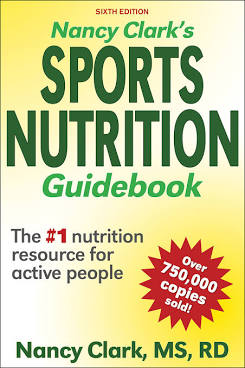In Sports, Winning Takes Smart Nutrition
Spring is a time when many athletes commit to eating better to be able to perform better. This information on nutrition for soccer players may help you reach your goals!
Soccer is a Game. Control what you can control. You can impact your nutrition.
As you may recall from nursery songs, Mares eat oats and Does eat oats—and so do many soccer players. (The song is actually Mairzy Doats.)
Soccer players of all ages, and soccer parents often have questions arise about oatmeal — here are some great nutritional tips and advice to help your game.
Frequently youth soccer players ask: Is oatmeal beneficial for soccer players? Are steel-cut oats better than quick-cooking oats? Does oatmeal really “stick to your ribs”? And for some, “Why would any athlete even want to eat oatmeal?? It’s so gluey … yuck!
Let’s take a look at what you might want to know about this popular sports food.
Oatmeal (aka porridge in parts of the world) refers to de-husked oats (groats) that have cut into small bits (steel-cut) or softened with steam, then flattened with rollers (rolled oats). Regardless of the way the groat is processed, all types of oatmeal are 100% whole grain and offer similar amounts of protein, fiber, vitamins, and minerals. What differs is the cooking time, shape (rolled or steel-cut), texture (chewy or smooth), and whether or not they are all natural or fortified with B-vitamins and iron.
Which type is best? The answer depends on your taste preference and available cooking time.
Steel-cut oats take 20 to 30 minutes to cook. They have a chewier texture than rolled oats. Some runners use a crockpot to cook them overnight. Despite popular belief, steel-cut oats are nutritionally similar (not superior) to rolled oats.
Old-fashioned oats (rolled oats) cook in 5 to 10 minutes and have a firm texture. They can be eaten uncooked with milk, like any dry cereal, or enjoyed in the form of muesli or overnight oats.
Quick-cooking oats are ready in a minute on the stovetop. Because they are rolled thinner than old-fashioned oats, they cook quicker and have a smoother texture.
Instant oats cook quickly in the microwave. They are pre-cooked, rolled thin, dried, and then rehydrated to be eaten. They can be fortified (or not) with B-vitamins and iron. Some flavors are sugar-laden and perhaps best saved for dessert?
Smart Nutrition for Soccer Players
How to boost your oat intake:
• Oats are versatile. You can cook them in water—or preferably cook them in milk to add protein, calcium, and creaminess. The suggested ratio is 1 cup (8 oz) of liquid for each half-cup rolled oats or ¼ cup steel-cut oats.
• For a savory option, cook oats in broth, season with soy sauce, or top with sriracha. Or add some cheese and spinach when cooking, then top the oatmeal with a poached egg.
• As an athlete, you lose sodium in your sweat, so don’t be afraid to make oatmeal tasty by sprinkling on some salt. A quarter teaspoon salt per ½ cup dry oats really helps change the bowl of glue into a yummier breakfast.
• Add sweeter, if desired, to make the oatmeal taste even better—honey, maple syrup, raisins, chopped dates. These extra carbs offer fuel for your muscles. According to the US Dietary Guidelines, 10% of daily calories can come from added sugar. That’s at least 200 calories for a soccer player—guilt‑free!
• Don’t have time to cook oats in the morning? Make overnight oats the night before! There’s no wrong way to make overnight oats. In a 16-ounce glass jar (such as a peanut butter jar), combine ½ cup old fashioned oats, ½ cup milk, ¼ cup Greek yogurt, fruit-of-your choice (banana, berries), and optional add-ins, such as chia seeds and maple syrup. Refrigerate at least 2 hours for the oats to soften, if not overnight.

• Add rolled oats to a recovery shake or fruit smooothie for a thicker texture, as well as for more carbs to refuel your muscles.
• Bake with oat flour (blenderized oats).
Oatmeal — Maybe Old Fashioned But A Trendy Nutrional Choice
Nancy clark
Smart Nutrtion Recipe:
Peanut Butter & Chocolate Chip Muffins (Gluten-free)
This healthy-ish muffin is made with oat flour (rolled oats pulverized in a blender or food processor until they look like flour). The recipe can pass for either a muffin or a cupcake. It’s yummy for fueling up before and/or refueling after your workout.
2 eggs
3/4 cup (180 ml) milk
2 tablespoons canola oil
1/2 cup brown sugar
1/2 cup peanut butter, preferably all-natural
1 teaspoon vanilla extract
1 1/2 cup oat flour
1 tablespoon baking powder
3/4 cup (dark) chocolate chips
- Preheat oven to 350 degrees F. (180° C).
- Prepare 12 -muffin tin with a light coating of oil or use paper baking cups.
- Mix together in a medium bowl, the eggs, milk, oil, brown sugar, peanut butter, vanilla extract, oat flour and baking powder. Stir well.
- Fold in 1/2 cup of the chocolate chips into batter.
- Add batter evenly into the 12-muffin tin.
- Distribute the extra 1/4 cup chocolate chips evenly to the top of each muffin.
- Bake for 12-15 minutes or until a cake tester comes out clean.
Yield: 12 muffins
Total calories: 3,000; 250 calories per muffin; 27 g carb; 7 g protein; 13 g fat
Recipe courtesy of Kate Scarlata RD, author of The Low FODMAP Cookbook.

The Peanut Butter Chocolate Chip Muffin recipe (see below) from my Sports Nutrition Guidebook is a good pre-exercise energy booster and tasty way to boost your oat intake. Enjoy!
Nancy Clark’s best selling Sports Nutrition Guidebook is available on Amazon. Readers “get real-world advice from an internationally respected and trusted sports nutritionist.”
Nancy Clark, MS, RD counsels both casual and competitive athletes in the Boston-area (Newton; 617-795-1875).
Clark’s best-selling Sports Nutrition Guidebook is a popular resource, as is her online workshop.
Visit NancyClarkRD.com for more information.







